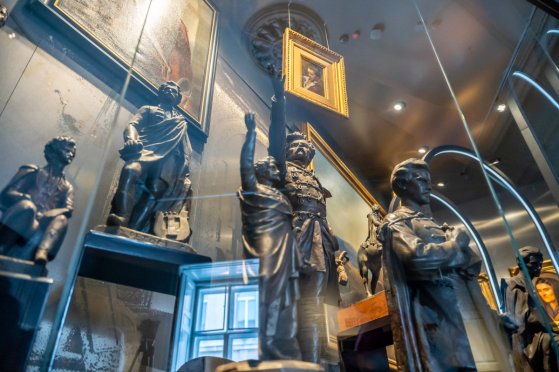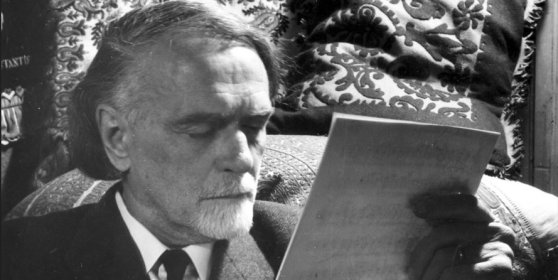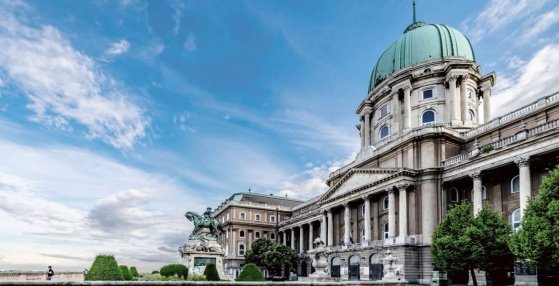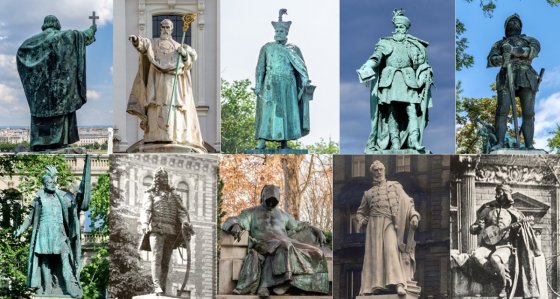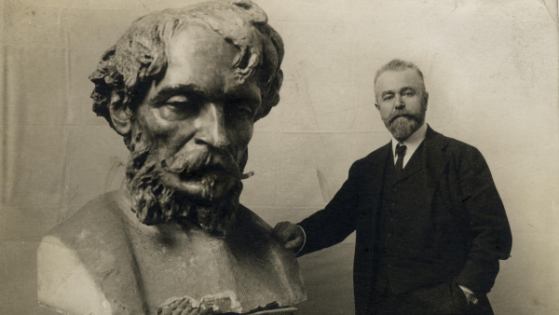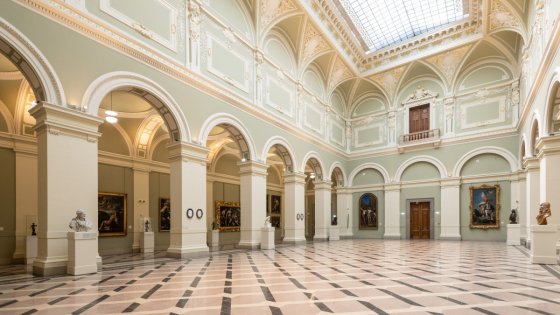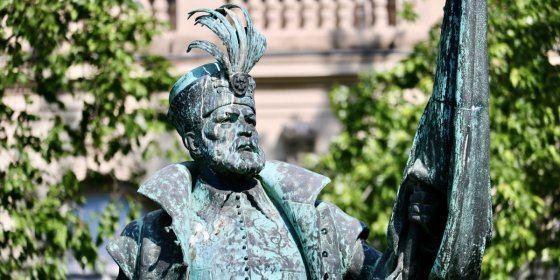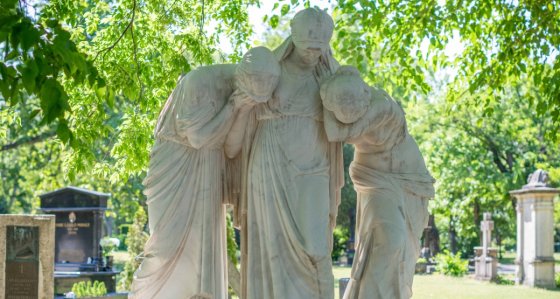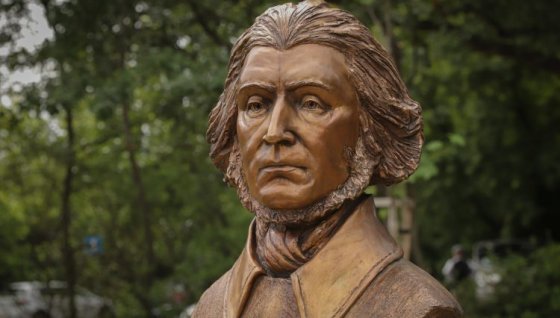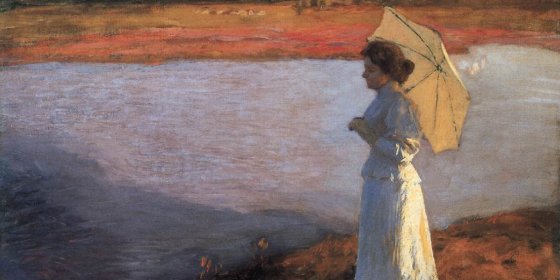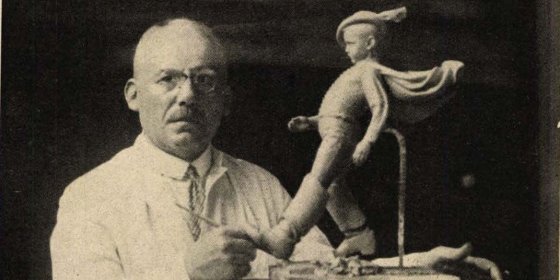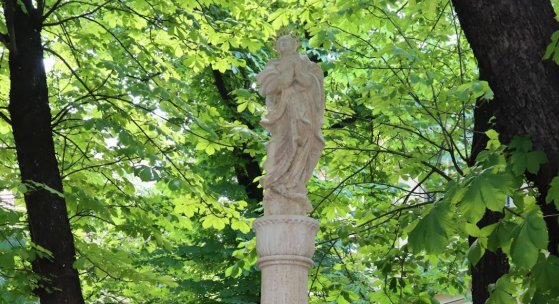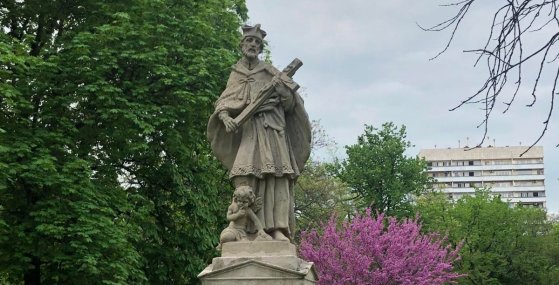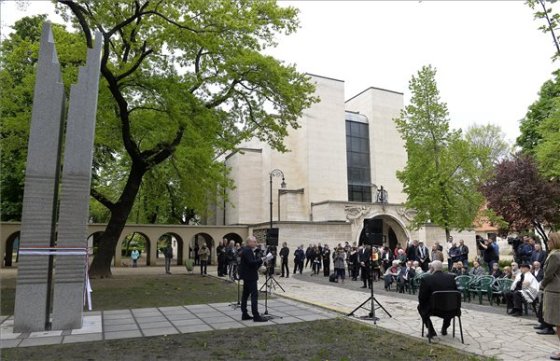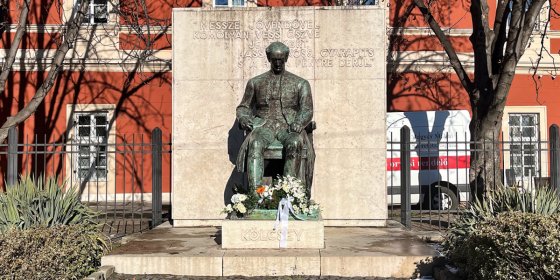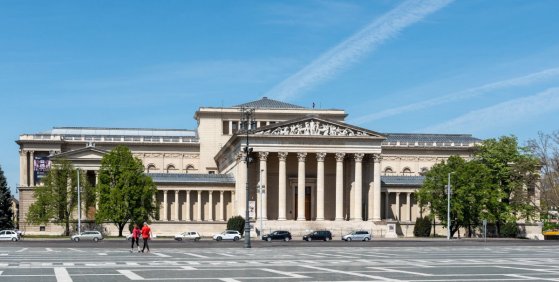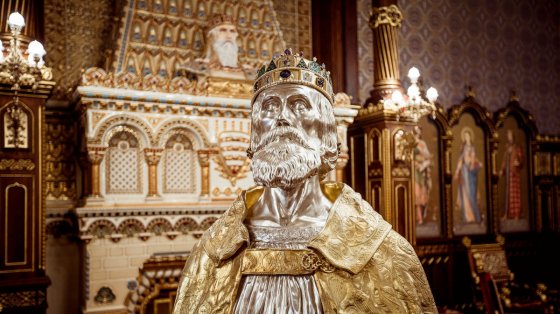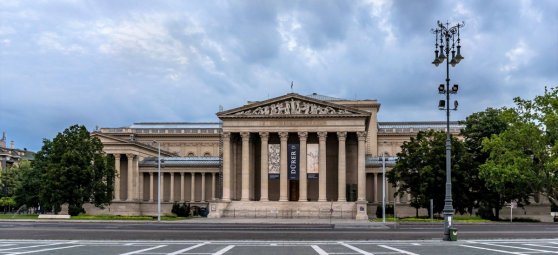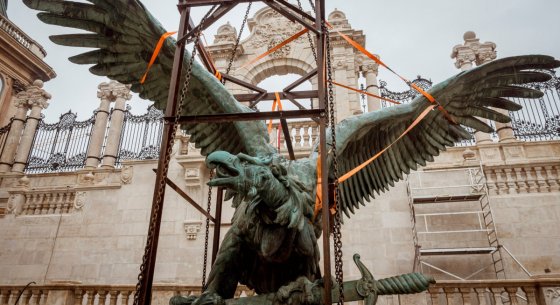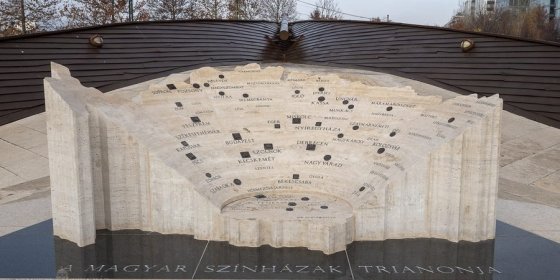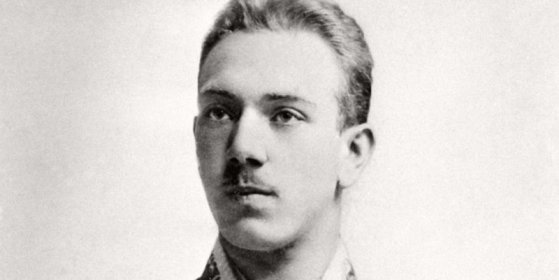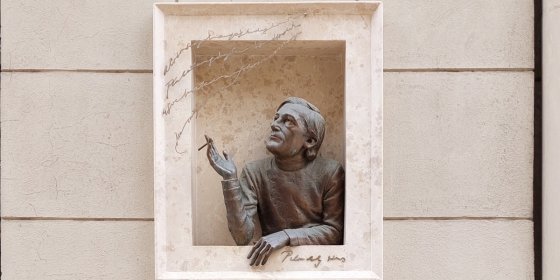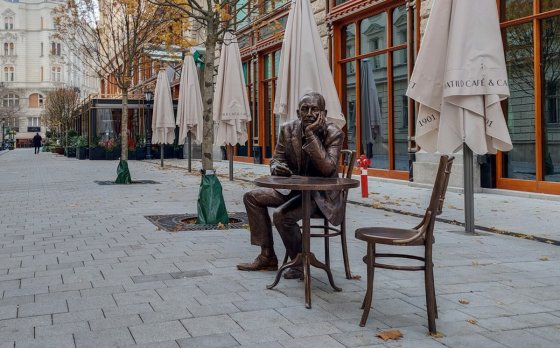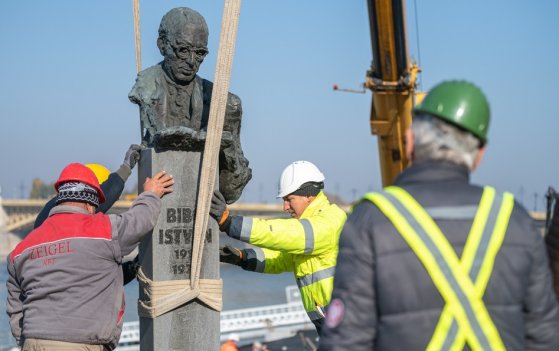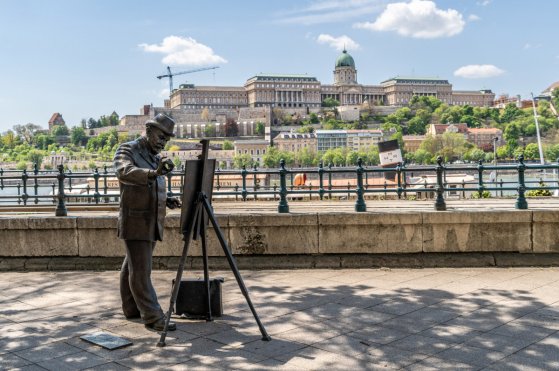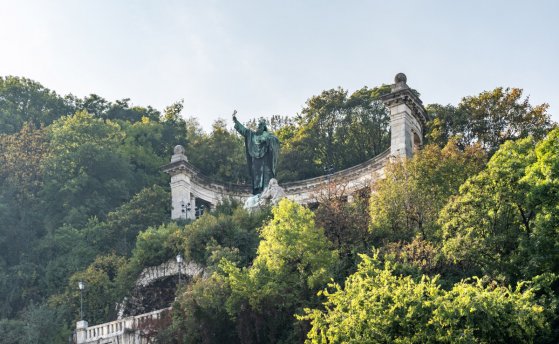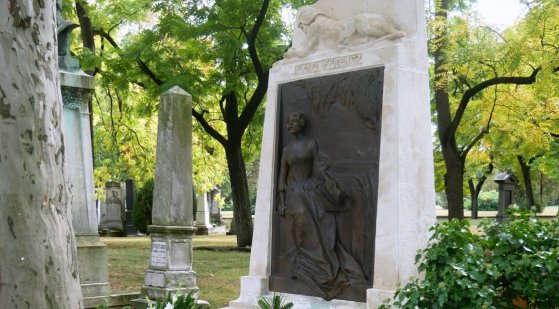 The „intertwined history” of the bridges and the city of Budapest
Which ideas and events have shaped the fate of bridges of Budapest and the cityscape? Alongside many other interesting facts, this question is also answered this newly published book by the Budapest City Archives, which introduces the history of bridges in Budapest.
The „intertwined history” of the bridges and the city of Budapest
Which ideas and events have shaped the fate of bridges of Budapest and the cityscape? Alongside many other interesting facts, this question is also answered this newly published book by the Budapest City Archives, which introduces the history of bridges in Budapest.
Art
 Who also painted the construction of the Chain Bridge: Miklós Barabás died 125 years ago
Who also painted the construction of the Chain Bridge: Miklós Barabás died 125 years ago
February 17, 2023 at 12:30 PM
We can confidently say that Miklós Barabás was one of the most outstanding artists of the Reform era, the first painter who earned the respect of society with his artistic work. During his long career, he made portraits of many important and well-known personalities, including Mihály Vörösmarty, János Arany, Ferenc Deák, Palatine Joseph, and even Franz Joseph. The capital also often provided the subject of his pictures. He achieved great success with his paintings, and the press regularly reported on his current works. It was thanks to his exceptional talent that he managed to gain fame at a time when the work of painters was not yet highly valued.
The new Petőfi exhibition opened at the PIM addresses the 21st-century people
January 14, 2023 at 2:30 PM
In honour of Petőfi, who was born 200 years ago, a new, large-scale permanent exhibition opened today, 14 January, at the Petőfi Literary Museum (PIM). The institution's undisclosed goal was to bring the poet's work closer to the people of the 21st century, to our everyday lives: the importance of home, the importance of friends or the sacrifice made for our loved ones are all topics that we can easily identify with. Artefacts, special scenery and multimedia tools also help us to get familiar with the work of the poet. Topics that are still relevant today, in Petőfi's interpretation.
"Life without music is incomplete and not worth living", said Zoltán Kodály who was born 140 years ago
December 18, 2022 at 11:00 AM
Zoltán Kodály is one of the greatest figures in Hungarian music literature, who was not only an exceptionally talented composer but also a researcher and teacher. He began his work as a folk song collector in 1905 and presented his own works to the public in 1910, and Psalmus Hungaricus, written in 1923, was a huge international success. His music pedagogy method is still used in education today. The composer's former home on Kodály Körönd now houses the memorial museum named after him.
From the Curia's building to the City Park: the Hungarian National Gallery opened 65 years ago
October 25, 2022 at 10:00 AM
The Hungarian National Gallery is one of the best-known institutions in the country and the capital, which celebrates its 65th anniversary this year. The institution, which collects masterpieces of Hungarian art, opened its doors to visitors on 5 October 1957 in its first home, in the Curia's building on Kossuth Square designed by Alajos Hauszmann, to which the Museum of Ethnography later moved. It occupied its current location, buildings B, C and D of the Buda Castle, in 1975. Within the framework of the Liget Project, the plans for the new home have already been drawn up, although its implementation is still pending.
The gift of the King: the legend of the ten statues
September 25, 2022 at 3:30 PM
It has been 125 years since Franz Joseph gave ten statues to Budapest on 25 September 1897. Most of the statues are still elegant decorations of the city to this day, and Pestbuda reported about them several times. However, we have now looked into what could have prompted Franz Joseph to give a gift.
Throughout the city, you can admire the statues of György Zala, who died 85 years ago
August 1, 2022 at 11:30 AM
György Zala owes the central sculpture group of the Millennium Monument on Hősök Square with the Archangel Gabriel to György Zala, as well as the original Andrássy and István Tisza statues in Kossuth Square, or the dignified seated statue of Queen Elizabeth in today's Döbrentei Square. Zala was one of the busiest sculptors of his time, and his legacy has an architectural aspect: his villa in Pest was designed by none other than the master of Art Nouveau, Ödön Lechner.
The imposing Baroque Hall of the Museum of Fine Arts has opened
June 3, 2022 at 4:30 PM
In addition to the Renaissance Hall and the Romanian Hall, the almost renovated Baroque Hall of almost 800 square meters will also be available to the public from tomorrow. The last three large museum squares displaying and stylizing architectural styles were last opened simultaneously for 80 years.
Gift of Franz Joseph - the statue of Miklós Zrínyi and Gábor Bethlen was inaugurated on Kodály Körönd 120 years ago
June 2, 2022 at 3:00 PM
King Franz Joseph decided 125 years ago to donate ten statues to the nation, and he himself would cover the costs of making public works of art that would depict the famous personalities of the Hungarians. The first two of these monuments were inaugurated 120 years ago on the Kodály Körönd, but today only the first of the statues of Miklós Zrínyi and Gábor Bethlen can be seen in its original location. On the occasion of the anniversary, we followed the fate of the statues of the Kodály Körönd in the last century.
Masterpieces of tomb art on Fiumei Road - The graveyard that is known as a sculpture park
May 28, 2022 at 9:00 AM
The Fiumei Road Cemetery deserves special attention not only as a resting place for the country's greats, but also the sculptures and works of art belonging to the tombs are invaluable. From now on, visitors can use their phones to get to know them more thoroughly: they can read about the most outstanding sculptures and their creators with the help of a QR code.
A statue of the Polish poet Adam Mickiewicz was erected in Óbuda
May 24, 2022 at 6:00 PM
The statue of the Polish poet Adam Mickiewicz was inaugurated in the park named after him in Óbuda. It was said at the ceremony that this is one example of Polish-Hungarian friendship, as while Sándor Petőfi has a statue in Warsaw and a street named after him, one of the greatest figures in Polish literature, Mickiewicz, has now been erected in Budapest.
Béla Iványi-Grünwald, a popular figure in art life in Budapest, was born 155 years ago
May 16, 2022 at 12:00 PM
Among the innovators of Hungarian painting at the turn of the century, we consider Béla Iványi-Grünwald, who was born 155 years ago. He studied at the Mintarajziskola [Design School] on Andrássy Avenue, later becoming a popular and defining figure in Budapest's art life, one of the founders and core members of the Fészek Klub [Nest Club]. He is also the founder of the Nemzeti Szalon [National Salon], an association of artists dissatisfied with official art policy, with its headquarters in Erzsébet Square. When he died at János Hospital in 1940, his contemporaries said goodbye not only to a talented artist but also to an always cheerful social man.
Ede Telcs, born 150 years ago, created masterpieces in various areas of sculpture
May 13, 2022 at 2:00 PM
Ede Telcs is an outstanding figure in Hungarian sculpture, and his works in Budapest include representative public monument, tombstone and architectural sculpture. His works adorning the Hungarian capital were mostly placed in City Park and the National Graveyard on Fiumei Road, as well as in the city centre. His work is intertwined with the life of the famous personalities, mainly with the architect Ignác Alpár, of Budapest which was developing into a world city.
The restored Immaculata statue in Krisztinaváros is back to its place - its original was erected 320 years ago
May 6, 2022 at 8:00 PM
Another sculpture with a long history was renewed in the capital: the Immaculata statue in Krisztinaváros, erected 320 years ago in 1702 - the oldest public sculpture in Budapest - has been replaced by a copy since 1928, and in the meantime this work has also needed to be restored. The work was carried out at the Department of Restoration of the Hungarian University of Fine Arts recently, and yesterday the sculpture was placed at the Krisztina Square erection site.
Two more of Molnár-C. Paul’s work can be found in the downtown parish church
May 2, 2022 at 6:00 PM
Two more of Molnár-C. Paul's two more paintings were placed in the Budapest-Downtown Parish Church on Thursday. Earlier, he also made the crucifix hanging above the sanctuary and the main altarpiece, as they were destroyed in World War II.
The statue of St. John of Nepomuk in Krisztinaváros is being restored
April 30, 2022 at 4:00 PM
The statue of St. John of Nepomuk in the Horváth Garden is being renovated. The original of the work dates back to the 19th century. It preserved the banks of the Devil's Trench from the first half of the 19th century, but the old, damaged statue was demolished in the 1960s, and in 1999 the statue, which can still be seen today, was completed and restored.
A monument was inaugurated for World War II victims in the 12th district
April 28, 2022 at 9:00 PM
On Thursday, in the park area in front of the Church of the Heart of Jesus in Városmajor, a memorial to the civilian and military victims of world war II was handed over. The monument, which consists of two granite blocks, depicts in an abstract way the loss that extinguished human lives have meant and will mean to those affected.
The fate of the Kölcsey statue: the Romanians beheaded it, the people of Budapest recreated it
January 22, 2022 at 12:00 PM
The story of Ferenc Kölcsey's first statue in Budapest is very adventurous: the statue of the poet, which was inaugurated in Batthyány Square in 1939 and looked down from a low platform, was able to watch the passers-by from a much more worthy place decades ago. The original of the work in Budapest was inaugurated 125 years ago, hundreds of kilometers from its present location, in Nagykároly. In our article, on the occasion of the Hungarian Culture Day, we present the reasons why the work of art came from Transylvania to Budapest and why it was moved from its original place in Batthyány Square.
The renewed Városliget wing of the Museum of Fine Arts opened with a permanent exhibition
December 15, 2021 at 5:00 PM
As a new stop in the comprehensive reconstruction of the museum, a new permanent exhibition unit of the Old Gallery of the Museum of Fine Arts was opened in the renovated part of the Városliget wing of the building, more than one and a half thousand square meters, arranged according to a new concept.
The exhibition of St. Stephen's Hall in Buda Castle was expanded with a masterpiece
December 8, 2021 at 1:00 PM
The bust of our founding king recently arrived at the place of the relic, which had been lent by the former archbishop of Zagreb. The relic that can be seen in the St. Stephen's Hall of the Buda Castle from today is a real masterpiece from the millennium, which was presented to the public for the first time at the 1896 Millennium National Exhibition.
The Church of Arts - The building of the Museum of Fine Arts is 115 years old
December 5, 2021 at 11:00 AM
The Museum of Fine Arts is one of the most famous buildings in the country, without which the Heroes' Square is unimaginable. Yet this was erected the latest, it is ten years younger than the Kunsthalle opposite. However, its size and seriousness make this fact forgettable - and of course it is no longer young, it was opened to the public 115 years ago. In this context, Pestbuda presents its history and beautiful interiors, which house one of the richest art collections in Central Europe.
The renovated Turul statue in the Buda Castle was restored to its original location
December 2, 2021 at 5:00 PM
The Turul statue of the sculptor Gyula Donáth was restored to its original location next to the Habsburg Gate in the Buda Castle. The beautified work was placed on its pedestal using a 60-ton giant crane. Specialists performed patina-preserving cleaning and restoration on the work of art, repairing the surface with bronze welding. The inner frame of the statue was also reinforced.
Trianon of Hungarian Theaters - A Monument to the Disintegrated Hungarian Theater Life
December 1, 2021 at 8:00 PM
The National Theater commemorates the Hungarian theatrical life, which has been torn apart for more than a hundred years, with the sculpture The Trianon of Hungarian Theaters. The work of István Horváth Böjte will be inaugurated on Saturday in front of the theater building in Hajóorr.
A statue pays tribute to the legacy of Alfred Hajós
November 28, 2021 at 3:00 PM
The Hungarian Jewish Cultural Association (Mazsike) and the MANK Hungarian Creative Public Nonprofit Ltd. want to pay tribute to Alfred Hajós, first champion of the modern Olympic games.
The poet and Budapest - János Pilinszky was born 100 years ago
November 27, 2021 at 9:00 AM
Budapest gave Pilinszky the experience of the city: when he was young, he absorbed the colours and atmosphere, and although he got to know many big cities in the world (he visited Rome, Paris, London, Vienna or New York), the real remained Budapest for him. The poet, born 100 years ago, spent his infancy in the city centre, in the immediate vicinity of the Károlyi Garden, he lived with his family for long in Molnár Street, he got his first home on Izabella Street at the age of forty. Cafés, editorial offices, bars and cinemas were also important venues for his life and poetry.
Have you ever seen the new Krúdy statue in Downtown? - The public works were erected near the former Downtown Café
November 26, 2021 at 5:00 PM
One of Krúdy's favorite places was the Downtown Café, which once operated in the southern Klotild Palace, where he wrote a significant part of the short stories of Sindbad. The genre statue now erected near Ferenciek Square commemorates this event.
The artists' colony on Százados Road was built on the outskirts of the city 110 years ago, today it is an integral part of Józsefváros
November 15, 2021 at 1:00 PM
A special and closed world bordered by a fence where artists live and create. That's how it has been for110 years. With the support of Mayor István Bárczy, the country's first artists' colony was built on Százados Road in 1911 from the budget of the capital, with fifteen one-storey houses and 28 studios. From the beginning, renowned artists created here, including Ferenc Medgyessy, Zsigmond Kisfaludi Strobl, Bertalan Pór, Dezső Czigány. The area, which was still a suburb at the time of its handover, is now an integral part of Józsefváros.
The statue of István Bibó was put back on the upper embankment of Pest
October 30, 2021 at 2:00 PM
The bronze bust of István Bibó was lifted back to its place on the Széchenyi embankment by crane, which was moved due to the ongoing renovation works of the older József Antall embankement.
In the footsteps of our famous painters - Artist sculptures in Budapest
October 16, 2021 at 2:00 PM
On the occasion of the Hungarian Artists Day on 18 October, we followed in the footsteps of Budapest's artist sculptures: we show how the famous artists live in the memory of the capital, which painters' memories were preserved, why and how.
The colonnade of the statue of St. Gellért is being renovated
October 2, 2021 at 12:00 PM
The reconstruction of the column surrounding the statue erected in 1904 will be carried out by the Budapest Gallery, and the works are expected to last until the end of the year. In addition, the Monument to the Displaced and the 56th Memorial Column in Tabán will be renewed.
The tomb of Ferenc Erkel was renovated in the cemetery on Fiumei Street
October 1, 2021 at 4:30 PM
The composer's now renewed tomb was erected in 1904 by the Budapest Philharmonic Society. The reliefs created by Ede Kallós show the beats of Erkel's masterpiece, the Hymn.
More articles
 The „intertwined history” of the bridges and the city of Budapest
Which ideas and events have shaped the fate of bridges of Budapest and the cityscape? Alongside many other interesting facts, this question is also answered this newly published book by the Budapest City Archives, which introduces the history of bridges in Budapest.
The „intertwined history” of the bridges and the city of Budapest
Which ideas and events have shaped the fate of bridges of Budapest and the cityscape? Alongside many other interesting facts, this question is also answered this newly published book by the Budapest City Archives, which introduces the history of bridges in Budapest.
 The Bridge Report, which brought a turning point in the history of Budapest
A travel report that changed the history of Pest and Buda, as well as Hungary. The little book contributed to the change of half a thousand years of legal customs and the implementation of an investment of unprecedented size and technical quality. This book was The Bridge Report [Hídjelentés in Hungarian].
The Bridge Report, which brought a turning point in the history of Budapest
A travel report that changed the history of Pest and Buda, as well as Hungary. The little book contributed to the change of half a thousand years of legal customs and the implementation of an investment of unprecedented size and technical quality. This book was The Bridge Report [Hídjelentés in Hungarian].
 Drama on the university wall - The heroic monument was planned 95 years ago
In the constant hustle and bustle of the Egyetem Square in Pest, the students may not even notice the monument that decorates the short section of wall between the church and the central building of ELTE. However, it commemorates their predecessors, the heroes who fought for their country in World War I, and those who heroically helped them. The first design of the dramatically collapsing soldier was born in 1928, ninety-five years ago.
Drama on the university wall - The heroic monument was planned 95 years ago
In the constant hustle and bustle of the Egyetem Square in Pest, the students may not even notice the monument that decorates the short section of wall between the church and the central building of ELTE. However, it commemorates their predecessors, the heroes who fought for their country in World War I, and those who heroically helped them. The first design of the dramatically collapsing soldier was born in 1928, ninety-five years ago.

